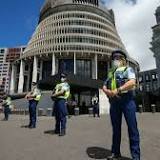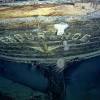A practical guide to stargazing

This article was produced by National Geographic Traveller (UK).
With light pollution increasing by 10% every year and an estimated 80% of the world population impacted by it, fewer and fewer people have regular access to a truly dark night sky. Unhindered stargazing has become a rare experience for many, yet it’s a tranquil escape from the frenetic modern world, giving us the chance to switch off and reflect on the enormity of the cosmos and our place in it.
Light pollution not only affects our ability to see stars but also has a significant impact on astronomical research, harms biodiversity, contributes to global warming and impacts human health. Preserving dark skies is essential for all living things, and being a respectful astrotourist helps you play a part in protecting our planet for future generations — here's how to do it responsibly.
Where and when to go stargazing
The ideal stargazing locations are far from city lights, with unobstructed views of the horizon. Mountains, moorlands, deserts and remote islands are good choices, thanks to their isolation, clear conditions and lack of light pollution. Winter is the best time of year because there are longer hours of darkness, and the air tends to be clearer (astronomers call this ‘good seeing’).
A good resource for choosing a destination is DarkSky International’s certified list of Dark Sky Places, which are recognised for their protection of the natural night-time environment and starry sky, while its DarkSky Approved Lodging lists stargazer-friendly accommodation.
It’s also helpful to consult a light pollution map like Lightpollutionmap.info, which uses satellite data of artificial light at night to show the darkest areas.
You may also want to time your trip around celestial events, such as eclipses or annual meteor showers like the Perseids in August when there are stunning displays of shooting stars. Be mindful of the moon phase — if you want to see our galaxy, the Milky Way, schedule your trip during the dark new moon phase. It can be spectacular viewing lunar craters and dark basins through a telescope when there’s a full moon.

Mountains, moorlands, deserts and remote islands are the ideal stargazing choices, thanks to their isolation, clear conditions and lack of light pollution.
Photograph by Travis Burke
Is it worth joining a stargazing tour?
A guide can provide equipment and valuable information, helping you spot planets, constellations and deep-sky objects that you might otherwise miss. Some destinations, such as observatories in Chile or New Zealand, even offer night-time viewing sessions on professional-grade telescopes.
(6 places to see the Northern Lights in Europe.)
What to bring on a stargazing trip
Night-time temperatures can drop significantly, especially in desert or mountain locations. Dress in layers and bring a good pair of finger-flap gloves and a hat, even in warmer climates.
Though your eyes are all you really need, binoculars on a tripod can be surprisingly effective and cost-friendly for observing nearby objects like our moon and the rings of Saturn. There are a range of augmented-reality apps, like SkyView or Stellarium, to help you identify stars, planets and constellations by pointing your phone at the sky.
How to spot celestial objects
Stars appear to twinkle because the Earth’s atmosphere interferes with their light, while planets like Jupiter and Saturn appear bright and steady. What we call ‘shooting stars’ are actually meteors — tiny pieces of rock or dust burning up as they enter our atmosphere. Meteor showers happen annually as Earth passes through debris fields in its orbit around the sun. The International Space Station (ISS) and China’s Tiangong space station are also visible – you can track them and find out when they’ll pass overhead using apps.
Planes generally have blinking lights, while satellites, such as those in the Starlink network, move steadily and quickly across the sky, sometimes in chains of dozens of lights that get mistaken for UFOs. Thousands more of these are being launched each year, causing a troubling new source of light pollution and potential space rubbish.
Dark sky etiquette
Be respectful of other stargazers by using only red torch lights, which preserve our night vision and protect wildlife. Don’t shine torches or phone screens at others — it can take 20 minutes for your eyes to re-adjust to the darkness after exposure to light.

Travellers can stargaze with monks at a Buddhist monastery in Ladakh, India.
Photograph by Astrostrays
9 of the best dark sky destinations
1. North York Moors, England
This designated Dark Sky Reserve is an easy-to-reach spot to see England’s starry skies — visit during one of its two annual dark sky festivals (Oct and Feb) for astronomy sessions, guided night hikes and other themed events. Or book a stargazing package at the Grand Hotel, which includes accommodation, meals and transport into the reserve at night for a session with an astronomer.
2. County Mayo, Ireland
The west of Ireland has sparkling, starry skies when the clouds part. Wild Nephin National Park (formerly Ballycroy) is a designated Dark Sky Park with a backdrop of rugged hills and coastline. Book a night hike or storytelling session with Terra Firma Ireland or aim for the Mayo Dark Sky Festival in November.
3. Canary Islands, Spain
The Spanish islands of La Palma and Tenerife are both home to working astronomical observatories with visitor programmes and a chance to gaze through pro telescopes. Don’t miss La Palma’s waymarked night-hiking routes, too.
4. Jasper National Park, Canada
With dark skies and a high northern latitude, Jasper is perfect for stargazing and Northern Lights-spotting in autumn when the skies are clear. The park hosts its annual stargazing festival from October to November, too.
5. Colorado, US
Thanks to its high elevations and dry climate, Colorado has some of the clearest skies in North America and a large collection of certified Dark Sky Places, including Great Sand Dunes National Park, and Hovenweep National Monument, shared with its neighbour Utah.
6. New Zealand
Vying for a shot at ‘Dark Sky Country’ certification, New Zealand’s minimal light pollution and wide-open spaces make it a dream destination. Dark Sky Project in the Aoraki Mackenzie Dark Sky Reserve on the South Island has world-class stargazing atop Mount John.
7. Atacama Desert, Chile
The driest non-polar desert on Earth, the Atacama has minimal humidity and clear air conditions, which is why some of the most important scientific observatories are located here, including the new Vera C Rubin Telescope, which will open in 2025 to hunt for dark matter.
8. Desengano Dark Sky Park, Brazil
Latin America’s first Dark Sky Park, located in Brazil’s Desengano State Park north of Rio de Janeiro, offers the chance to stargaze in a pristine jungle surrounded by fireflies. Base yourself in the park’s starry-themed gateway town, Santa Maria Madalena, from where guide Cristiana Rizzetto leads night tours.
9. Ladakh, India
High in the Himalayas, Ladakh has crystal-clear skies and an incredible backdrop of towering mountains. Book with Astrostays for the chance to experience a traditional Ladakhi homestay and stargaze with monks at a Buddhist monastery.


 New Zealand
New Zealand Argentina
Argentina  Australia
Australia  Austria
Austria  Brazil
Brazil  Canada
Canada  Germany
Germany  Ireland
Ireland  Italy
Italy  Malaysia
Malaysia  Mexico
Mexico  Poland
Poland  South Africa
South Africa  United Kingdom
United Kingdom  United States
United States 










